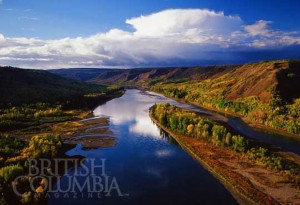BC Hydro’s $8-billion Site C hydroelectric megaproject has been a controversial topic recently. BC Hydro’s wants to expand and create a dam and a 1,100-megawatt hydroelectric generating station on First Nation’s territory, the Peace River in northeastern British Columbia. This is a bold move. I say this in reference to the article, where a few of the First Nation leaders express their issue’s with BC Hydro’s proposal. This is in terms of this action harming the environment and the territory that “would impair the (aboriginals) rights to fish, hunt and use the area for ceremonial purposes”.
This example is crucial in presenting to us the relevance of the external environment in making business decisions. The business before even suggesting such ideas must do a PEST analysis to see whether this idea of theirs will be accepted in the environment they operate in. Their views can even be further strengthened by looking at the opportunities and threats in a SWOT analysis.
Hence, knowing the external environment, and in this case the social aspects of the production area being First Nation Land, BC Hydro should weigh out the benefits and costs of this move in terms of publicity and social influence and then arrive at a decision whether to pursue this idea, as even though they may believe that this may have some social benefit, it may be a biased point of view.
Works Cited
O’Neil, Peter. “First Nation chiefs to stage Site C showdown.” www.vancouversun.com. N.p., 18 Sept. 2014. Web. 5 Oct. 2014. <http://www.vancouversun.com/news/First+Nation+chiefs+stage+Site+showdown/10215965/story.html>.
“Peace.” Peace Valley. N.p., n.d. Web. 5 Oct. 2014. <http://cdn.agilitycms.com/british-columbia-magazine/Images/Galleries/peace-river/peace_gallery-noborder.jpg>.
MLA formatting by BibMe.org.

